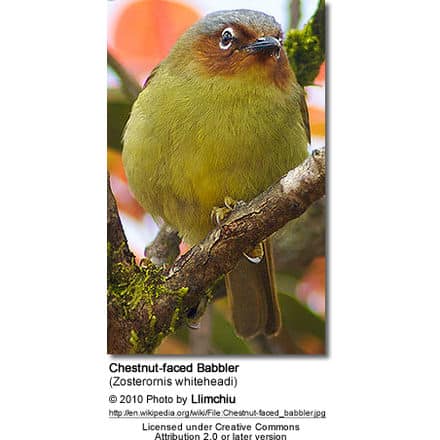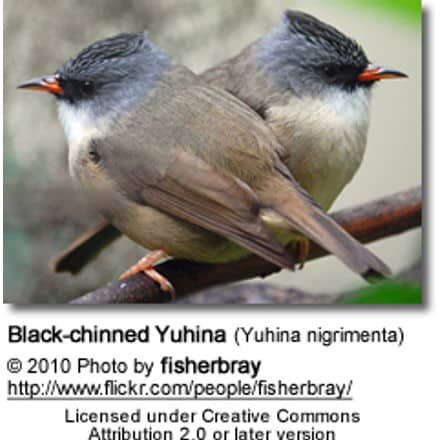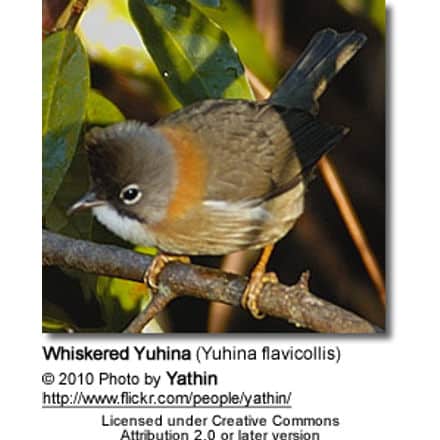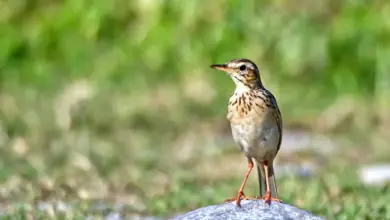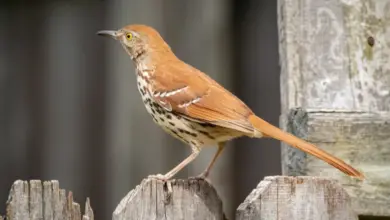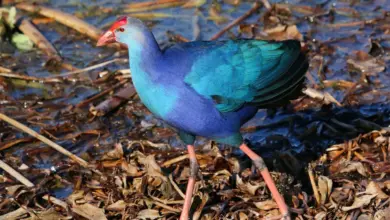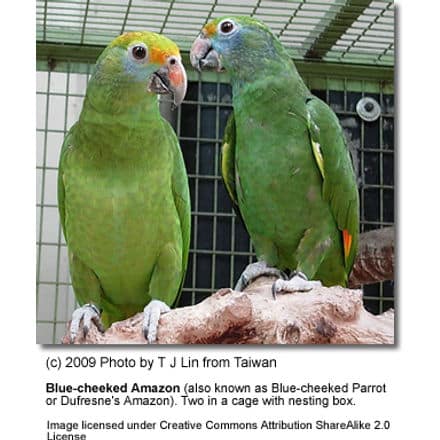Old World Babblers
Babblers are a large family of birds (Timaliidae) mostly found in the Old World (Europa, Asia and Africa), where they occur in tropical areas, with the greatest variety occurring in Southeast Asia. They are mostly resident (non-migratory).
They vary in size and coloration, but all have a soft, fluffy plumage. These birds have strong legs, and many are quite terrestrial. This group is not strongly migratory, and most species have short rounded wings and are weak flyers.
Babblers are generally social birds that are usually found in family groups and small flocks of up to about 20 individuals – typically foraging on the ground and loudly calling to one another. These opportunistic omnivores will feed on meat, plant material and / or berries.
The species are:
Family: Timaliidae
- Genus Malia
- Malia, Malia grata
- Genus Garrulax, the laughingthrushes
- Ashy-headed Laughingthrush, Garrulax cinereifrons : Endemic to Sri Lanka, where it occurs in rainforests – usually in deep jungle or dense bamboo thickets in the wet zone. It is quite common at prime sites like Kitulgala and Sinharaja. This species is resident (non-migratory) and has short rounded wings and a weak flight. The Ashy-headed Laughingthrush measures about 23 centimetre (9 in) in length including the long floppy tail. It is rufous brown above and deep buff below, with a grey head and white throat. Like other babblers, these are noisy birds, and the characteristic laughing calls are often the best indication that they are present, since they are often difficult to see in their preferred habitat. It builds its nest in a bush, concealed in dense masses of foliage. The normal clutch is three or four eggs. They are usually seen in groups of up to a dozen, and are also often found in the mixed feeding flocks typical of tropical Asian jungle. They feed mainly on insects, but also eat jungle berries.
- Sunda Laughingthrush, Garrulax palliatus
- Rufous-fronted Laughingthrush, Garrulax rufifrons
- Masked Laughingthrush, Garrulax perspicillatus
- White-throated Laughingthrush, Garrulax albogularis
- White-crested Laughingthrush, Garrulax leucolophus
- Lesser Necklaced Laughingthrush, Garrulax monileger
- Greater Necklaced Laughingthrush, Garrulax pectoralis
- Black Laughingthrush, Garrulax lugubris
- Striated Laughingthrush, Garrulax striatus
- White-necked Laughingthrush, Garrulax strepitans
- Black-hooded Laughingthrush, Garrulax milleti
- Grey Laughingthrush, Garrulax maesi
- Rufous-necked Laughingthrush, Garrulax ruficollis
- Chestnut-backed Laughingthrush, Garrulax nuchalis
- Black-throated Laughingthrush, Garrulax chinensis
- White-cheeked Laughingthrush, Garrulax vassali
- Yellow-throated Laughingthrush, Garrulax galbanus
- Wynaad Laughingthrush, Garrulax delesserti
- Rufous-vented Laughingthrush, Garrulax gularis
- Pere David’s Laughingthrush, Garrulax davidi
- Sukatschev’s Laughingthrush, Garrulax sukatschewi
- Moustached Laughingthrush, Garrulax cineraceus
- Rufous-chinned Laughingthrush, Garrulax rufogularis
- Spotted Laughingthrush, Garrulax ocellatus
- Barred Laughingthrush, Garrulax lunulatus
- Biet’s Laughingthrush, Garrulax bieti
- Giant Laughingthrush, Garrulax maximus
- Grey-sided Laughingthrush, Garrulax caerulatus
- Rusty Laughingthrush, Garrulax poecilorhynchus
- Chestnut-capped Laughingthrush, Garrulax mitratus
- Spot-breasted Laughingthrush, Garrulax merulinus
- Hwamei, Garrulax canorus
White-browed Laughingthrush, Garrulax sannio
- Rufous-breasted Laughingthrush, Garrulax cachinnans
- Grey-breasted Laughingthrush, Garrulax jerdoni
- Streaked Laughingthrush, Garrulax lineatus
- Striped Laughingthrush, Garrulax virgatus
- Scaly Laughingthrush, Garrulax subunicolor
- Brown-capped Laughingthrush,Garrulax austeni
- Blue-winged Laughingthrush, Garrulax squamatus
- Elliot’s Laughingthrush, Garrulax elliotii
- Variegated Laughingthrush, Garrulax variegatus
- Prince Henry’s Laughingthrush, Garrulax henrici
- Black-faced Laughingthrush, Garrulax affinis
- White-whiskered Laughingthrush, Garrulax morrisonianus
- Chestnut-crowned Laughingthrush, Garrulax erythrocephalus
- Golden-winged Laughingthrush, Garrulax ngoclinhensis
- Collared Laughingthrush, Garrulax yersini
- Red-winged Laughingthrush, Garrulax formosus
- Red-tailed Laughingthrush, Garrulax milnei
- Genus Liocichla, the liocichlas: Found in Asia from India to China. They are Old World babblers proper and belong to a clade also containing at least the Leiothrix, the barwings, the minlas and the sibias. Among these, they are a basal lineage (Cibois 2003).
- Genus Modulatrix
- Spot-throat, Modulatrix stictigula
- Genus Arcanator
- Dapple-throat, Arcanator orostruthus
- Genus Trichastoma
- White-chested Babbler, Trichastoma rostratum
- Sulawesi Babbler, Trichastoma celebense
- Ferruginous Babbler, Trichastoma bicolor
- Bagobo Babbler, Trichastoma woodi
- Genus Malacocincla
- Abbott’s Babbler, Malacocincla abbotti
- Horsfield’s Babbler, Malacocincla sepiarium
- Black-browed Babbler, Malacocincla perspicillata
- Short-tailed Babbler, Malacocincla malaccensis
- Ashy-headed Babbler, Malacocincla cinereiceps
- Genus Pellorneum
- Brown-capped Babbler, Pellorneum fuscocapillum Found in Sri Lanka. Its habitat is forest undergrowth and thick scrub. This species, like most babblers, is not migratory, and has short rounded wings and a weak flight. This babbler builds its nest on the ground or in a hole, concealed in dense masses of foliage. The normal clutch is two or three eggs. The Brown-capped Babbler measures 16cm including its long tail. It is brown above and rich cinnamon below. It has a dark brown crown. Brown-capped Babblers have short dark bills. Their food is mainly insects. They can be difficult to observe in the dense vegetation they prefer, but like other babblers, these are noisy birds, and their characteristic calls are often the best indication that these birds are present.Marsh Babbler, Pellorneum palustre
- Buff-breasted Babbler, Pellorneum tickelli
- Temminck’s Babbler, Pellorneum pyrrogenys
- Spot-throated Babbler, Pellorneum albiventre
- Puff-throated Babbler also called as Spotted Babbler Pellorneum ruficeps: Found in the Himalayas and the hills of India and parts of southeast Asia. Like most babblers, it is not migratory, and has short rounded wings and a weak flight. Its habitat is scrub and bamboo thickets, where it builds its nest on the ground, laying 2-5 eggs. Puff-throated Babblers are plain brown above, and white, heavily streaked with brown, below. They have a chestnut crown, long buff supercilium (line above each eye) and dusky cheeks. The throat is white, and the bird’s habit of puffing it out gives it its English name. Puff-throated Babblers have strong legs, and are quite terrestrial. They can often be seen creeping through undergrowth in search of their insect food, looking at first glance like a Song Thrush.Black-capped Babbler, Pellorneum capistratum
- Genus Malacopteron
- Palawan Babbler, Malacopteron palawanense
- Moustached Babbler, Malacopteron magnirostre
- Sooty-capped Babbler, Malacopteron affine Found in southeast Asia. The Sooty-capped Babbler is also known in Malay as Rimba Tinjau Belukar. Its main diet is small insects.
- Scaly-crowned Babbler, Malacopteron cinereum
- Rufous-crowned Babbler, Malacopteron magnum
- Grey-breasted Babbler, Malacopteron albogulare
- Genus Illadopsis, the illadopsises
- Blackcap Illadopsis, Illadopsis cleaveri
- Scaly-breasted Illadopsis, Illadopsis albipectus
- Rufous-winged Illadopsis, Illadopsis rufescens
- Puvel’s Illadopsis, Illadopsis puveli
- Pale-breasted Illadopsis, Illadopsis rufipennis
- Brown Illadopsis, Illadopsis fulvescens
- Mountain Illadopsis, Illadopsis pyrrhoptera
- African Hill Babbler, Illadopsis abyssinica
- Genus Kakamega
- Grey-chested Illadopsis, Kakamega poliothorax
- Genus Ptyrticus
- Thrush Babbler, Ptyrticus turdinus
- Genus Pomatorhinus, scimitar babblers
- Genus Xiphirhynchus, scimitar-babblers
- Slender-billed Scimitar Babbler, Xiphirhynchus superciliaris
- Genus Jabouilleia, scimitar-babblers
- Short-tailed Scimitar Babbler, Jabouilleia danjoui
- Naung Mung Scimitar Babbler, Jabouilleia naungmungensis : Found in temperate rainforest on steep, sub-Himalayan hillsides. It was discovered in February 2004 in the far north of Burma, and is named after the village of Naung Mung, the closest settlement to its discovery site. It is believed to be fairly common within its range. Due to its recent description, its conservation status has not been formally evaluated, however.
- Genus Rimator, wren-babblers
- Long-billed Wren-babbler, Rimator malacoptilus
- Genus Ptilocichla, wren-babblers
- Bornean Wren-babbler, Ptilocichla leucogrammica
- Striated Wren-babbler, Ptilocichla mindanensis
- Falcated Wren-babbler, Ptilocichla falcata
- Genus Kenopia, wren-babblers
- Striped Wren-babbler, Kenopia striata
- Genus Napothera, wren-babblers
- Large Wren-babbler, Napothera macrodactyla
- Rusty-breasted Wren-babbler, Napothera rufipectus
- Black-throated Wren-babbler, Napothera atrigularis
- Marbled Wren-babbler, Napothera marmorata
- Limestone Wren-babbler, Napothera crispifrons
- Streaked Wren-babbler, Napothera brevicaudata
- Mountain Wren-babbler, Napothera crassa
- Luzon Wren-babbler, Napothera rabori
- Eyebrowed Wren-babbler, Napothera epilepidota
- Genus Pnoepyga, wren-babblers
- Scaly-breasted Wren-babbler, Pnoepyga albiventer
- Immaculate Wren-babbler, Pnoepyga immaculata
- Pygmy Wren-babbler, Pnoepyga pusilla
- Genus Spelaeornis, wren-babblers
- Rufous-throated Wren-babbler, Spelaeornis caudatus
- Mishmi Wren-babbler, Spelaeornis badeigularis
- Bar-winged Wren-babbler, Spelaeornis troglodytoides
- Spotted Wren-babbler, Spelaeornis formosus
- Long-tailed Wren-babbler, Spelaeornis chocolatinus
- Tawny-breasted Wren-babbler, Spelaeornis longicaudatus
- Wedge-billed Wren-babbler, Sphenocichla humei
- Genus Neomixis, jerys
- Common Jery, Neomixis tenella
- Green Jery, Neomixis viridis
- Stripe-throated Jery, Neomixis striatigula
- Genus Hartertula
- Wedge-tailed Jery, Hartertula flavoviridis
Genus Stachyris- Deignan’s Babbler, Stachyris rodolphei
- Buff-chested Babbler, Stachyris ambigua
- Rufous-fronted Babbler, Stachyris rufifrons
- Rufous-capped Babbler, Stachyris ruficeps
- Black-chinned Babbler, Stachyris pyrrhops
- Golden Babbler, Stachyris chrysaea
- Flame-templed Babbler, Stachyris speciosa
- Chestnut-faced Babbler, Stachyris whiteheadi
- Luzon Striped Babbler, Stachyris striata
- Panay Striped Babbler, Stachyris latistriata
- Negros Striped Babbler, Stachyris nigrorum
- Palawan Striped Babbler, Stachyris hypogrammica
- White-breasted Babbler, Stachyris grammiceps
- Sooty Babbler, Stachyris herberti
- Grey-throated Babbler, Stachyris nigriceps
- Grey-headed Babbler, Stachyris poliocephala
- Snowy-throated Babbler, Stachyris oglei
- Spot-necked Babbler, Stachyris striolata
- White-necked Babbler, Stachyris leucotis
- Black-throated Babbler, Stachyris nigricollis
- White-bibbed Babbler, Stachyris thoracica
- Chestnut-rumped Babbler, Stachyris maculata
- Chestnut-winged Babbler, Stachyris erythroptera
- Crescent-chested Babbler, Stachyris melanothorax
- Genus Sterrhoptilus
- Genus Dumetia
- Genus Rhopocichla
- Dark-fronted Babbler, Rhopocichla atriceps : Found in Sri Lanka, and in the Western Ghats of southern India. Its habitat is dense forest undergrowth and bamboo jungle. This species, like most babblers, is not migratory, and has short rounded wings and a weak flight. This babbler builds its nest in a bush, concealed in dense masses of foliage. The normal clutch is two eggs. The Dark-fronted Babbler measures 13cm including its longish tail. It is brown above and white below. The two subspecies in the Western Ghats have black hoods, but the two Sri Lankan races have this reduced to a dark bandit mask. Dark-fronted Babblers have short dark bills. Their food is mainly insects. They can be difficult to observe in the dense vegetation they prefer, but like other babblers, these are noisy birds, and their characteristic calls are often the best indication that these birds are present. This bird-related article is a stub.
- Genus Macronous, tit-babblers
- Striped Tit-babbler, Macronous gularis
- Grey-cheeked Tit-babbler, Macronous flavicollis
- Grey-faced Tit-babbler, Macronous kelleyi
- Brown Tit-babbler, Macronous striaticeps
- Fluffy-backed Tit-babbler, Macronous ptilosus
- Miniature Tit-babbler, Micromacronus leytensis
- Genus Timalia
- Chestnut-capped Babbler, Timalia pileata
- Genus Chrysomma
- Yellow-eyed Babbler, Chrysomma sinense
- Jerdon’s Babbler, Chrysomma altirostre : Found in South Asia. The nominate subspecies from Myanmar, the Myanmar Jerdon’s Babbler (Chrysomma altirostre altirostre) may already be extinct. It occurred in tall-grass habitat in the floodplains of the Ayeyarwady River from Bhamo to Bago and up the Sittang River nearly to Taungoo. It was last seen in July 1941 in habitat fragments at Myitkyo, wtith the last specimen taken in 1914 or perhaps as late as the mid-1930s. Due to the inaccessibility of its range and consequent lack of fieldwork, it might conceivably still exist.(Collar et al. 2001, BLI 2006) Of the Sind Jerdon’s Babbler (C. a. scindicum) from the Indus basin and the Terai Jerdon’s Babbler (C. a. griseigularis) of the sub-Himalayan plains, together less than 10000 mature birds are believed to remain. Its threat category VU A2c+3c (BLI 2004). This means that its population has declined by an estimated 30% and is expected to continue to do so for another decade at least. The reasons are not fully understood, but the population reduction is probably related to habitat destruction for agriculture and flood control.
- Rufous-tailed Babbler, Chrysomma poecilotis : Endemic to China.
- Genus Turdoides
- Hartlaub’s Babbler, Southern White-rumped Babbler, Angola Babbler, Turdoides hartlaubii
- Spiny Babbler, Turdoides nipalensis
- Iraq Babbler, Turdoides altirostris
- Common Babbler, Turdoides caudatus
- Striated Babbler, Turdoides earlei
- White-throated Babbler, Turdoides gularis
- Slender-billed Babbler, Turdoides longirostris
- Large Grey Babbler, Turdoides malcolmi
- Arabian Babbler, Turdoides squamiceps
- Fulvous Chatterer, Turdoides fulvus
- Scaly Chatterer, Turdoides aylmeri
- Rufous Chatterer, Turdoides rubiginosus
- Rufous Babbler, Turdoides subrufus
- Jungle Babbler, Turdoides striatus
- Orange-billed Babbler, Turdoides rufescens : Found in Sri Lanka. Its habitat is rainforest, and it is seldom seen away from deep jungle. This species, like most babblers, is not migratory, and has short rounded wings and a weak flight. Although its habitat is under threat, it occurs in all the forests of the wet zone, and is quite common at prime sites like Kitulgala and Sinharaja. It builds its nest in a tree, concealed in dense masses of foliage. The normal clutch is two or three deep greenish blue eggs. These birds are plain orange brown below, and have a slightly darker shade above. The crown and nape (back of the neck) are grey, and the bill is orange. The Orange-billed Babbler lives in flocks of seven to ten or more. It is a noisy bird, and the presence of a flock may generally be known at some distance by the continual chattering, squeaking and chirping produced by its members. It is usually the first sign that a mixed-species feeding flock, so characteristic of Asian wet forests, is in the vicinity. It feeds mainly on insects, but also eats jungle berries.
- Yellow-billed Babbler, Turdoides affinis : Found in Sri Lanka and southern India. Its habitat is scrub and cultivation. This species, like most babblers, is not migratory, and has short rounded wings and a weak flight. It builds its nest in a tree, concealed in dense masses of foliage. The normal clutch is two to four greenish blue eggs, although up to five may be laid by birds in the hills of Sri Lanka. These birds have grey brown upperparts, grey throat and breast with some mottling, and a pale buff belly. The head and nape (back of the neck) are grey. The race T. a. taprobanusi of Sri Lanka is rufous beneath, and more heavily streaked on the throat and breast. It resembles Jungle Babbler, Turdoides striatus, but that species does not occur on the island. The Yellow-billed Babbler lives in flocks of seven to ten or more. It is a noisy bird, and the presence of a flock may generally be known at some distance by the continual chattering, squeaking and chirping produced by its members. It feeds mainly on insects, but also eats fruit.
- Blackcap Babbler, Turdoides reinwardtii : Found in west Africa from Senegal to Cameroon. Its habitat is thick scrub and forest. This species, like most babblers, is not migratory, and has short rounded wings and a weak flight. It builds its cup-shaped nest in a tree, concealed in dense masses of foliage. The normal clutch is two or three eggs. These birds have dark grey-brown upperparts. The head is brownish black with a white throat and conspicuous white eye ring. The underparts are white, mottled on the breast and with buff flanks. The Blackcap Babbler lives in flocks of four to twelve or more, which help to raise the young communally. It is a noisy bird, and the presence of a flock may generally be known at some distance by the continual chattering, squeaking and chirping produced by its members. The main call is a cha-ka-ta. It feeds mainly on insects, but also eats fruit. The binomial commemorates the botanist Caspar Georg Carl Reinwardt.
- Dusky Babbler, Turdoides tenebrosus
- Black-lored Babbler, Turdoides melanops
- Scaly Babbler, Turdoides squamulatus
- White-rumped Babbler, Turdoides leucopygius
- Southern Pied Babbler, Turdoides bicolor
- Northern Pied Babbler, Turdoides hypoleucus
- Hinde’s Pied Babbler, Turdoides hindei
- Cretzschmar’s Babbler, Turdoides leucocephalus
- Brown Babbler, Turdoides plebejus
- Arrow-marked Babbler, Turdoides jardineii
- Bare-cheeked Babbler, Turdoides gymnogenys
- Genus Babax, the babaxes
- Chinese Babax, Babax lanceolatus
- Giant Babax, Babax waddelli
- Tibetan Babax, Babax koslowi
- Genus Leiothrix
- Silver-eared Mesia, Leiothrix argentauris
- Red-billed Leiothrix, Leiothrix lutea
- Genus Cutia
- Cutia, Cutia nipalensis
- Genus Pteruthius, shrike-babblers
- Black-headed Shrike-babbler, Pteruthius rufiventer
- White-browed Shrike-babbler, Pteruthius flaviscapis
- Green Shrike-babbler, Pteruthius xanthochlorus
- Black-eared Shrike-babbler, Pteruthius melanotis
- Chestnut-fronted Shrike-babbler, Pteruthius aenobarbus
- Genus Gampsorhynchus
- White-hooded Babbler, Gampsorhynchus rufulus
- Genus Actinodura, the barwings
- Rusty-fronted Barwing, Actinodura egertoni
- Spectacled Barwing, Actinodura ramsayi
- Black-crowned Barwing, Actinodura sodangorum
- Hoary-throated Barwing, Actinodura nipalensis
- Streak-throated Barwing, Actinodura waldeni
- Streaked Barwing, Actinodura souliei
- Taiwan Barwing, Actinodura morrisoniana
- Genus Minla, the minlas
- Blue-winged Minla, Minla cyanouroptera
- Chestnut-tailed Minla, Minla strigula
- Red-tailed Minla, Minla ignotincta
- Genus Alcippe, the fulvettas
- Golden-breasted Fulvetta, Alcippe chrysotis
- Gold-fronted Fulvetta, Alcippe variegaticeps
- Yellow-throated Fulvetta, Alcippe cinerea
- Rufous-winged Fulvetta, Alcippe castaneceps
- White-browed Fulvetta, Alcippe vinipectus
- Chinese Fulvetta, Alcippe striaticollis
- Spectacled Fulvetta, Alcippe ruficapilla
- Streak-throated Fulvetta, Alcippe cinereiceps
- Ludlow’s Fulvetta, Alcippe ludlowi
- Rufous-throated Fulvetta, Alcippe rufogularis
- Dusky Fulvetta, Alcippe brunnea
- Rusty-capped Fulvetta, Alcippe dubia
- Brown Fulvetta, Alcippe brunneicauda
- Brown-cheeked Fulvetta, Alcippe poioicephala
- Grey-cheeked Fulvetta, Alcippe morrisonia
- Javan Fulvetta, Alcippe pyrrhoptera
- Mountain Fulvetta, Alcippe peracensis
- Nepal Fulvetta, Alcippe nipalensis
- Genus Lioptilus
- Bush Blackcap, Lioptilus nigricapillus
- Genus Kupeornis, the mountain-babblers
- White-throated Mountain Babbler, Kupeornis gilberti
- Red-collared Mountain Babbler, Kupeornis rufocinctus
- Chapin’s Mountain Babbler, Kupeornis chapini
Genus Parophasma- Abyssinian Catbird, Parophasma galinieri
- Genus Phyllanthus
- Capuchin Babbler, Phyllanthus atripennis
- Genus Crocias, the crociass
- Grey-crowned Crocias, Crocias langbianis
- Spotted Crocias, Crocias albonotatus
- Genus Heterophasia, the sibias
- Rufous-backed Sibia, Heterophasia annectens
- Rufous Sibia, Heterophasia capistrata
- Grey Sibia, Heterophasia gracilis
- Black-backed Sibia, Heterophasia melanoleuca
- Black-headed Sibia, Heterophasia desgodinsi
- White-eared Sibia, Heterophasia auricularis
- Beautiful Sibia, Heterophasia pulchella
- Long-tailed Sibia, Heterophasia picaoides
Genus Yuhina, the yuhinas- Genus Myzornis
- Fire-tailed Myzornis, Myzornis pyrrhoura
- Genus Oxylabes
- White-throated Oxylabes, Oxylabes madagascariensis
- Genus Crossleyia
- Yellow-browed Oxylabes, Crossleyia xanthophrys
- Genus Chamaea
- Wrentit, Chamaea fasciata
The genus Mystacornis is now classified as a vanga.

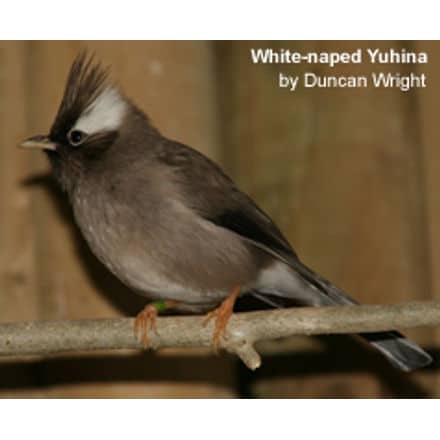 White-browed Laughingthrush, Garrulax sannio
White-browed Laughingthrush, Garrulax sannio